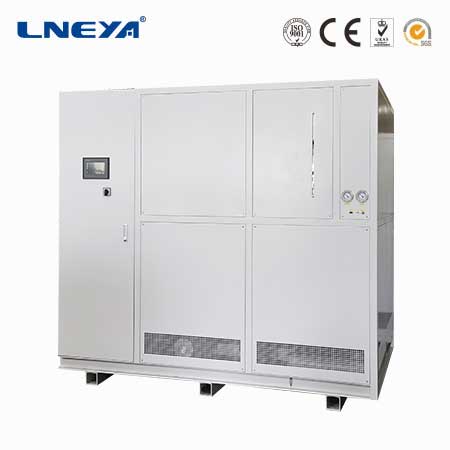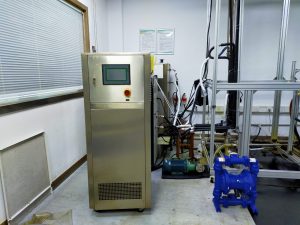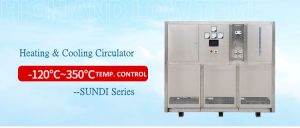How to replace the four-way valve of industrial refrigeration equipment?
The four-way valve of industrial refrigeration equipment needs to be replaced in time after a long period of use, so how to replace it?

When replacing industrial refrigeration equipment, you need to first remove the connecting pipe connecting the compressor exhaust pipe and the suction pipe. Because the pipes connecting the condenser and the three-way valve on the chiller four-way are close, it is not easy to take it out of the nozzle. Therefore, the pipe connecting the compressor discharge pipe and suction pipe should be removed first.
Next, remove the connecting pipe connecting the three-way valve and the condenser, and use the industrial refrigeration equipment torch to heat the four-way valve at the same time to connect the three-way valve and the condenser pipe interface. When the two pipe ports are red and the solder starts to flow, Use pliers to clamp the pipe connecting the four-way valve to the compressor exhaust pipe and lift it up. When the two pipe ports reach a certain temperature and the connecting pipe is loosened, the four-way valve can be removed.
Industrial refrigeration equipment needs to pay attention to that the temperature is too high when welding the four-way valve nozzle, which will easily damage the plastic valve block in the valve body. Therefore, the valve body should be wrapped with a towel to cool down, and the temperature of the valve body is transmitted through the 3 pipes at the root. The 3 pipes at the root should be wrapped first. Since the pipe connecting the compressor exhaust pipe is far from the valve body of the four-way valve, the temperature will not damage the internal valve block during welding, so there is no need to wrap the nozzle with a towel.
When installing the four-way valve body, you can use a welding torch to heat the nozzles of the 3 pipes at the root of the four-way, so that the remaining solder on the surface is fully melted and flows until it falls off, so that the surface of the nozzle is smooth, so that it can be inserted into the four-way smoothly. Valve nozzle. Because the difficulty of welding lies in the three pipes at the root, the pipe connecting the compressor exhaust pipe can be pulled to one side, and after welding the three nozzles, weld the pipe connecting the compressor exhaust pipe.
Since it is difficult to weld the middle pipe between the four-way, the middle pipe should be welded first, then the pipes on both sides should be welded, and then the pipe connecting the compressor exhaust pipe should be welded. After the compressor exhaust pipe nozzle is installed and welded, the four joints are welded. NS.
After installing the four-way valve of the industrial refrigeration equipment, you need to pay attention to the leakage detection of the refrigeration system, and then put it into use after the leakage detection.
Related recommendations
-
The main purpose of the reactor heating and cooling system
1776The reaction kettle heating and cooling system is suitable for high-purity metals, rare substance purification, laboratory environment simulation, magnetron sputtering, vacuum coating and other industries. The large-scale cryogenic pump unit can p...
View details -
Temperature conditions of new energy vehicle batteries
1427When automobile manufacturers continue to improve battery life to overcome the driver's mileage anxiety, the energy density of the large batteries installed is also gradually increasing, which means that the temperature monitoring function of the...
View details -
Commissioning of circulating water chiller equipment in the chemical industry
1559After completing the installation of circulating water chillers in the chemical industry, certain debugging needs to be carried out in the early stage of operation. Only through careful debugging can we find out whether there are hidden troubles i...
View details -
How To Choose The Screw Type Water-Cooled Chiller
1862Compared with the similar chillers, the screw type water-cooled chiller has many advantages. We as one of the top chiller manufacturers share you more. 1. The temperature of the heat conducting liquid can be adjusted to any temperature you want, a...
View details
 LNEYA Industrial Chillers Manufacturer Supplier
LNEYA Industrial Chillers Manufacturer Supplier













